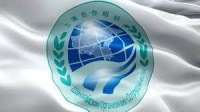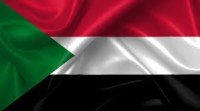Sudan’s Iranian Rapprochement Gives Control Of The Red Sea To BRICS
A little-noticed diplomatic development that has significant regional and global implications
It’s been little noticed in the media, but Monday’s (October 9) statement by the governments of Iran and Sudan that they are to reestablish diplomatic relations after seven years of divorce has effectively handed control of the entire Red Sea and Suez Canal access to the BRICS and BRICS-friendly nations.
At the most recent BRICS summit it was decided amongst the original BRICS members – Brazil, Russia, India, China and South Africa – to expand the group by another six countries from January 1 next year. These include Argentina, Egypt, Ethiopia, Iran, Saudi Arabia and the UAE. While Argentina’s acceptance of this offer may not be realised due to changing political winds in the country and an election poised to take place this month, the remaining five new BRICS members are all MENA influential – and that includes the Red Sea.

As can be seen, the Red Sea includes Egypt, Sudan, and Eritrea on the Western shores, with Ethiopia also a significant, albeit non-coastal presence. To the Eastern shores lies Saudi Arabia, and to the north, on the Persian Gulf, the UAE.
We recently discussed the implications of these new MENA countries joining BRICS in the following articles:
 Egypt
Egypt
 Ethiopia
Ethiopia
 Iran
Iran
 Saudi Arabia
Saudi Arabia
 The UAE
The UAE
And summarised the position in this recent publication (complimentary download):
BRICS and MENA
Sudan’s reestablishing of diplomatic relations with Iran is therefore of considerable importance when considering the overall development of the BRICS influence within the MENA and Red Sea regions. The move essentially passes control of the entire Red Sea and Suez Canal shipping to the BRICS and BRICS-friendly nations.
Sudan & BRICS Relations

There are other links that solidify the relationship between Sudan and the BRICS. Sudan’s main import partners today are China (78% of the total) followed by the UAE, Japan, Saudi Arabia, and Italy – three out of five being BRICS. Sudan’s top five export markets are 100% BRICS – China, Russia, Saudi Arabia, India, and the UAE.
Sudan also has regional clout. It is Africa’s third-largest country by area, and is a member of the League of Arab States (LAS), which also includes Algeria, Bahrain, Comoros, Djibouti, Egypt, Iraq, Jordan, Kuwait, Lebanon, Libya, Mauritania, Morocco, Oman, Palestine, Qatar, Saudi Arabia, Somalia, Sudan, Syria, Tunisia, the United Arab Emirates, and Yemen. Interestingly, the LAS also includes observer nations Brazil and India, both also BRICS members, and Eritrea, an additional Red Sea nation.
Sudan and the Shanghai Cooperation Organisation

The rapprochement of bilateral relations between Iran and Sudan will undoubtedly create a significant resurgence of trade, and could also lead to Sudan joining the Shanghai Cooperation Organisation (SCO) as a dialogue partner. Iran is already a full member of the SCO while other Arabic dialogue partners include Bahrain, Egypt, Kuwait, Qatar, Saudi Arabia, and the UAE along with regionally friendly Turkiye, also incidentally slated to be a future BRICS member from possibly 2015.
Such a move would strengthen the SCO in the MENA region and possibly assist with developing solutions to the problematic conflicts happening in Yemen and Somalia. To date, Saudi Arabia and Iran have been opposite sides of these conflicts – China and Russia will want to see this resolved – while the benefits in terms of increased security and trade will be regionally welcomed. It should be noted that both China and Russia have Red Sea naval bases that can be used to protect shipping as well as serve as a deterrence to regional conflicts. Russia’s base is on the Sudan coast.
Why Sudan?

Sudan has a population of 49 million and a GDP (PPP) of US$207 billion. Per capita GDP (PPP) is US$4,450. This compares with Iran’s population of 89 million, and GDP (PPP) figures of US$1.692 trillion and per capita income of US$19,548. These differences mean that Iran – and potentially other BRICS nations will be able to shift some manufacturing to Sudan to take advantage of lower production costs.
This trend of relocating manufacturing to the African Red Sea nations is already happening. Russia is discussing investing in and developing of auto-manufacturing plants in Ethiopia, with Lada having already contractually agreed to do so. Despite the brand having a Soviet era lack of respect in the West, the company is one of Russia’s top-selling brands and manufacturers heavy-duty SUVs – ideal for Africa’s sometimes difficult road conditions. Lada intend to sell onto the African market and reach out to auto buyers in Sudan, Kenya and Somalia. These markets are dominated by Japanese brands; yet using lower cost production bases in Sudan and Ethiopia, the BRICS countries – and especially China, India, Iran and Russia – will all be hoping to compete.
This in turn will also help Sudan and Ethiopia develop their secondary industrial manufacturing markets. In short – both Sudan and Ethiopia can help the other BRICS members compete for cost efficiency in both MENA and other international markets.
China and India will also be interested in Sudan’s gold reserves. Both are the world’s leading buyers for the jewellry industry, with Sudan being the African continent’s third largest producer. Sudan extracted 22 tonnes of gold last year.
Such trade has been expedited by the African Continental Free Trade Agreement (AfCFTA), which China gave significant advisory assistance in creating and which came into effect in January 2021. This is being phased in, but effectively reduces intra-African tariffs on 95% of all goods. Sudan is a signatory. That makes Africa an increasingly viable sourcing destination and, with the resulting Free Trade and Special Economic Zones (China and Russia have both invested in building these in Port Said, near to the Suez Canal in Egypt) can match at low cost African and imported products to produce finished items – either for sale back onto the African market or reexported elsewhere.
Sudan and the INSTC
There are also possibilities for expanding the INSTC, the Eurasian transport routes that run East from China, across Central Asia to the Caspian Sea and further dispersal to ports in Russia, the Caucasus, Europe, or south to Iran, the Middle East, and South Asia. The current terminus is Iran’s Persian Gulf Port at Bandar Abbas, with links east to India. But this is also being extended. Russia has recently tested it by sending a direct freight train to Saudi Arabia’s Red Sea Jeddah Port. It is highly likely that this would be extended to Sudan to give access to other North African markets, and further South-East to Tanzania, and Kenya.

The announcement that Iran and Sudan have reestablished diplomatic relations barely mentioned a whisper. But the implications of this has a significant regional and international trade development reach, and adds to the continuing geopolitical and commercial reach of the BRICS.
Chris Devonshire-Ellis is the Chairman of Dezan Shira & Associates. He may be reached via asia@dezshira.com
Related Reading






